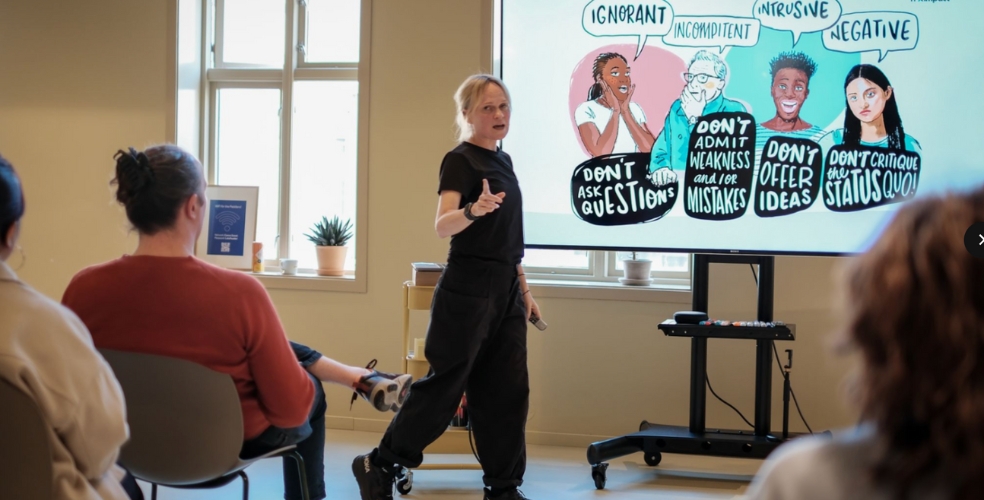Design is messy, and there isn’t one approach that works for every context. Genuine design experience involves adapting the range of possible approaches you could take and then doing what’s best for the context of the work.
Working in different contexts takes this a step further. Design thinking in healthcare needs to take a different approach than in central or local government. As a service designer, I’ve spent a lot of my time working in the health system learning specifically about the challenges of design in healthcare.
The context that makes design in healthcare different
Off the back of the pandemic, healthcare demand has increased exponentially. This means longer waiting times and services struggling to deliver. With this overall system pressure to consider as a starting point, there are several specific considerations to think about:
- Healthcare workers are under extreme pressure - High demand leads to low morale and staff burnout. This makes research and service improvement difficult to coordinate.
- Healthcare inequalities are prevalent - There are unfair and avoidable differences in health between different groups within society. This needs to be addressed and a careless approach can exacerbate these differences.
- The existing tech landscape is messy with many legacy products - Integrated Care Systems can use multiple tech products which are “owned” by different suppliers. It’s a tough landscape to navigate.
- Healthcare is a truly blended service - This means a focus on physical touchpoints enabled by digital components. Patient journeys, in most cases, will always feature a physical aspect. This brings with it even greater complexity.
- All healthcare journeys are systemic by nature - This means they involve many organisations. A full journey can involve primary, secondary, tertiary, and community care. Many organisations have different needs and contexts. Each healthcare site can work in different ways – with different processes, policies, and technologies.
- There is a huge amount of risk - Healthcare is about people’s wellbeing. If things go wrong, it can affect the quality of life. Any changes to services require care and safety.
These factors aren’t exclusive to healthcare. But collectively, they create a unique landscape in which to design services.
Being intentional in our approach to service design
When you’re starting to design services for healthcare, it’s important to be intentional in your approach. This will look different for every project, but doing the following can help set you up for successful design thinking in healthcare.
Always consider the full-service perspective
This means patients, families, clinical staff, non-clinical staff, and digital product specialists. The convenient model of ‘frontstage, backstage, behind the scenes’ won’t always cut it here. Services in healthcare can be delivered not just by different departments in one organisation, but by different organisations across multiple geographical boundaries. By taking a full-service approach, you will work towards creating a comprehensive picture that can be used to make the right interventions. If you don’t, you will miss key tensions, challenges, and opportunities.
Engage healthcare teams far and wide
In practice, this means primary care, secondary care, a wide set of specialities, administrative teams and digital teams. Healthcare service experiences involve many different people and teams. You need to capture all their perspectives for your research. More than that, they all deserve a say, as they could have clinical ownership at one point in a healthcare pathway. It’s important to bring everyone along on the journey. By doing so, it becomes easier to get buy-in for any changes that are needed. You also might uncover a greater range of potential interventions to fix the problems you identified for patients and staff – what if you involved a team that had no touchpoint in the original service but could be brought in?
Minimise taking time away from care
Staff are stretched. Any time you take away from their day could be otherwise spent in their clinical role, helping patients. Transformative change is crucial for delivering better healthcare outcomes but it is tough to balance this with immediate clinical pressures. So be clear on what you need to achieve, make it as easy as possible to contribute, and offer an accessible range of activities for participants. Make the time sacrificed worth it.
Be vigilant in focusing on impact
What’s the point in taking time away from care for an improvement project if you can’t prove the end outcome either (i) has led to an improvement or (ii) has an evidence base to qualify further investment of time and money? Once you have understood the challenges of a service, focus on developing hypotheses about what needs to change. Use these hypotheses to think of interventions and plan data you will need to gather and measure to prove there is an improvement. For example, if we provide better information and support after discharge, could we reduce avoidable admissions?
Understand what the scope of a future service might be and act accordingly
Will you be designing a service at a national level that could be rolled out locally? Are you designing at an Integrated Care System level? Or is it specifically for a service within a Trust? This is important because the way you design it will need to be different.
Let’s say you’re designing a new digital care model to support older people with severe frailty, at the national level that health systems can implement in the future. Health systems have different capabilities, demographics and population health needs. To help that, you’ll need to design a service with clear decision points and flexible options, so health systems can choose what the service specification should be, so it works for them. For example, giving options for different workflows to be delivered digitally or physically, so the service can be adapted according to digital maturity, or provide different ways a service can be delivered geographically.
If the local healthcare system is small and has good public transport, a centralised model may be best. If it is huge with distributed populations then a decentralised model may be best. If you’re designing at a local level – perhaps with one site – you can be more prescriptive and less “modular” with how the service needs to be delivered. Factor this in before doing actual design work.
Address healthcare inequalities
There’s a saying that some communities are “hard-to-reach”. As a project team, you can’t simply accept this. Factor building relationships with communities excluded from services into your timelines, and consider it a must-have. Otherwise, the inequalities they experience will be exacerbated.
Your team can do this through a number of actions. Take the Core20PLUS5 model and identify the range of communities within your local area that you will need to engage with. You should engage with and design for the demographics likely to use your service and those likely to be excluded from it.
Build genuine long-term relationships with community groups. You can do this by understanding their specific needs through conscientious research, bringing them into the design journey through co-design activities, sharing progress with them, and making sure they have a critical voice in design decisions.
Do you want to learn more about design thinking in healthcare? If you want to explore a healthcare service design challenge with us, reach out to our Health team.
What happens when we believe everything can change?
Our recent design blog posts
Transformation is for everyone. We love sharing our thoughts, approaches, learning and research all gained from the work we do.
-

-

Content design for AI supported services
Read blog post -

Our time at Canoe Norway
Read blog post -

Transformation from the inside out
Read blog post



